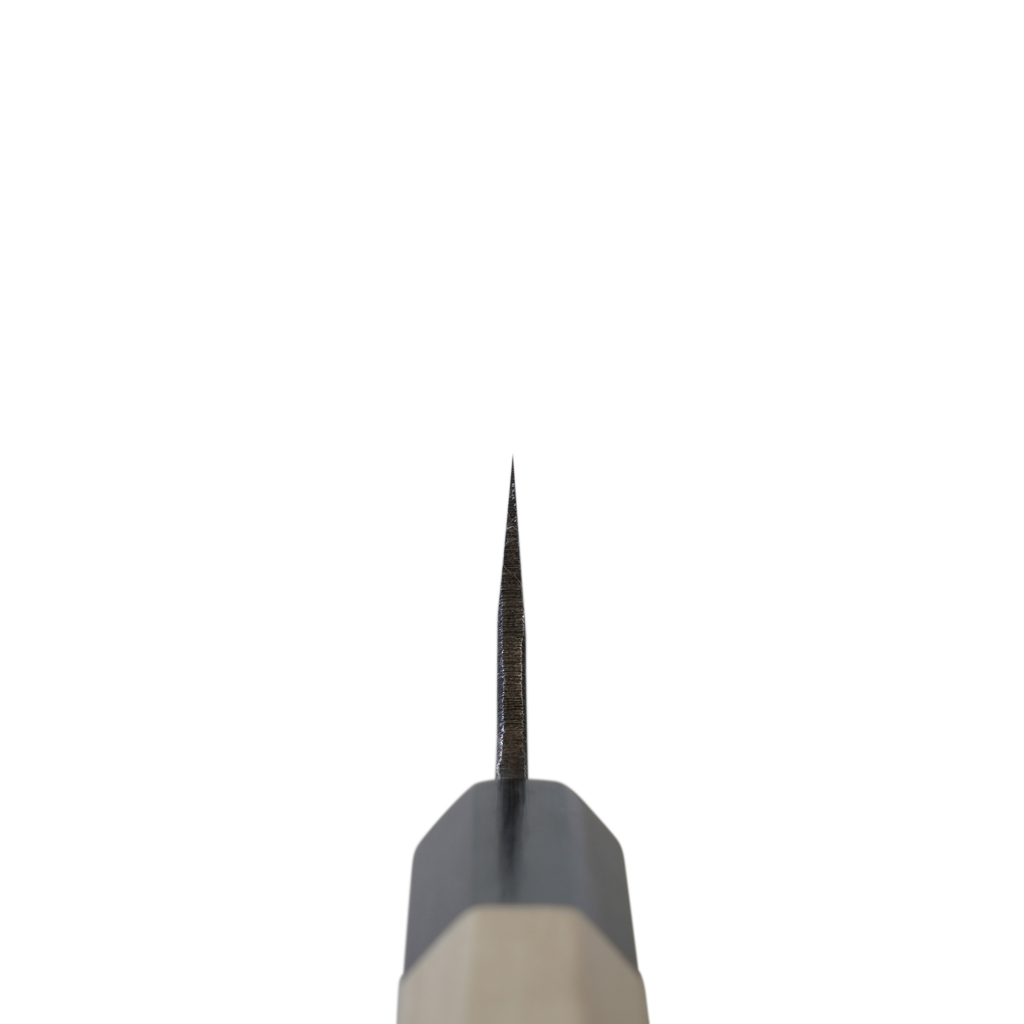SAKAI KIKUMORI (KURO) 180mm Bunka
SAKAI KIKUMORI (KURO) 180mm Bunka
The Bunka is a type of Santoku. The name ‘Santoku’ means ‘three virtues’ in Japanese, which represents the three main tasks this knife was meant to perform – slicing, dicing and chopping.
It has a more subtle curvature to the cutting edge and a shorter blade length than the Gyuto, making it ideal for everyday home use.
The Bunka has an acute angle knife tip known as 'kiritsuke', or K-tip. The K-tip is very handy for detailed knife tasks. However, the user will need to perform these tasks with care to prevent the point of the knife from being damaged.
The blade of this knife is hand forged by blacksmiths and the handles are made of wood. As a result, there will be minor variations in blade length, appearance of the blade finish, wood grain and colour. The product images should be treated as a close approximation of what will be received.
Couldn't load pickup availability
Share
{Maker/Brand}Maker
Kawamura Hamono
{Maker/Brand}Brand
Sakai Kikumori
{Maker/Brand}Origin
Osaka Prefecture, Japan
{Maker/Brand}Stock Keeping Unit
KKU180SK-M-BH-KI
{Specifications}Material(s)
YSS Shirogami #2 + Soft Iron-clad
A note on cladded blades: Cladding sandwiches the hardened steel core (i.e. the cutting edge), giving the blade durability – in particular resistance too breakage, and is more easily abraded for the purposes of profiling and sharpening. Cladding is referred to as 'Soft', which simply means it is less hard than the core steel.
{Specifications}Handle
Magnolia (Buffalo Horn Ring)
{Information}Care Instructions
Wash the knife by hand using a gentle dishwashing liquid. Do not use abrasive products, such as steel wool. Dry immediately with a soft cloth.
Do not let the knife drip dry.
Do not wash your knife in a dishwasher, as it encourages the blade to rust and the wooden handle to dry out and crack over time.
When cutting acidic foods such as tomatoes, onions or lemons, rinse and dry the blade immediately.
The knife is made of Japanese carbon steel. It's natural for the blade to patina over time. The patina results from coming in contact with food ingredients.
Your new knife is made from high quality Japanese carbon steel. This means that the blade may rust if left wet. This can take a very short time, especially with a new knife, so it is advisable to clean the blade regularly as you use it.
Japanese traditionally use Camellia (Tsubaki) Oil to treat carbon steel tools. Clean and dry the blade before applying the oil. Then wipe the blade with a clean cloth impregnated with the Camellia Oil. Re-apply regularly.
If rust does appear on the blade, use a rust remover.
The wooden handles also require care. Depending on use, we recommend oiling the handle every 3 – 12 months (depending on use) with mineral oil or tung oil.
Store your knife in a saya (our recommendation), the original box, a knife block or a mounted knife magnet bar/strip.
Japanese knives have a very fine edge and excellent edge retention. However, this means the edge can be damaged easily. Therefore, DO NOT cut hard ingredients (e.g. frozen food, bones, hard rind on parmesan cheese, woody rosemary stalks, hard pumpkins, coconuts, etc) or non-ingredients.
Do not drop your knife.
Only cut ingredients on a wooden chopping board.
For best results, your Japanese knife should be sharpened using a whetstone. We highly recommend that the edge be stropped, with a leather strop, after sharpening.
Do not use pull through sharpeners, regular or diamond honing steels or mechanical sharpening machines.
Related Products
Related Product
Related Product















